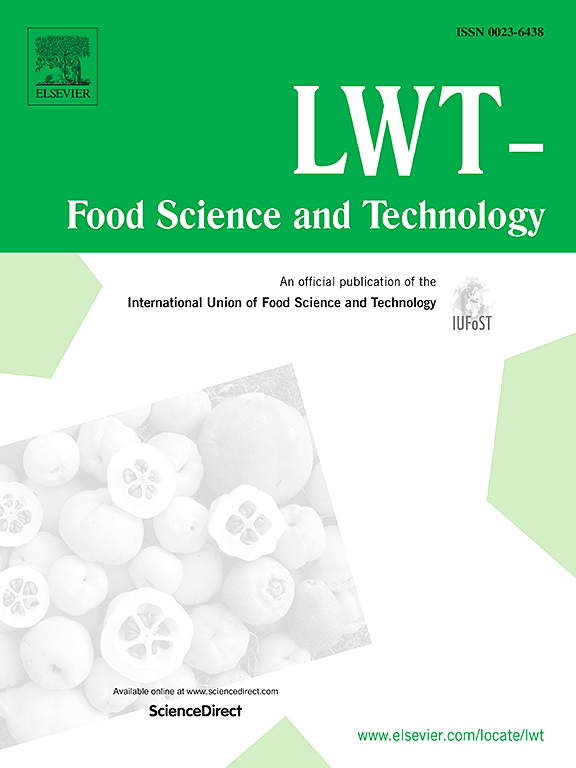保护小麦的生物多样性:从古老、古老和进化的小麦品种中提取的全麦面食的高科技、营养和感官品质
IF 6
1区 农林科学
Q1 FOOD SCIENCE & TECHNOLOGY
引用次数: 0
摘要
以工业规模生产了来自古代(呼罗山)、古老(Svevo x Senatore Cappelli, Senatore Cappelli)和两个农场(evoldurn, evoldurf)培育的一个进化种群(EP)的全粉意大利面样品,并对其技术、营养和感官特性进行了评估,并与现代全粉小麦粉样品(CTR)进行了比较。意大利面样品的最佳烹饪时间为18 ‘ 30″-22 ’。生面食样品的脂质和蛋白质含量有显著差异。蒸煮过程显著提高了面条的脂质和蛋白质含量,降低了面条的灰分含量。所有面食样品的结果都非常接近或超过营养声明的阈值,即总有效淀粉中缓慢消化淀粉占40%。用古、旧和EPs制作的意大利面在吸水率、体积膨胀率、蒸煮损失和质地方面都表现出较高的技术质量。所有的面食样品都受到了消费者的高度赞赏,在100毫米的线性享乐量表上显示出平均喜欢分数>;70。总的来说,古、老、EPs面食都表现出高品质的特点。这些发现与消费者的感官、营养和可持续性需求相关,因此,鼓励种植这些对生物多样性有积极影响的小麦。本文章由计算机程序翻译,如有差异,请以英文原文为准。

Preserving Triticum biodiversity: high technological, nutritional, and sensory quality of whole wheat pasta from ancient, old, and evolutionary wheat varieties
Whole meal spaghetti samples from ancient (Khorasan), old (Svevo x Senatore Cappelli, Senatore Cappelli), and one evolutionary population (EP) cultivated in two farms (Evoldur-N, Evoldur-F) were produced at industrial scale, and the technological, nutritional, and sensory properties were evaluated and compared to a modern whole meal semolina sample (CTR). Pasta samples showed optimal cooking times in the rage of 18′30″-22’. Significant differences were observed in lipid and protein contents of uncooked pasta samples. The cooking process significantly increased lipids and proteins and decreased the ash content of spaghetti. All pasta samples resulted very close to or beyond the threshold for the nutritional claim of 40 % slowly digestible starch on total available starch. Spaghetti produced with ancient, old, and EPs showed high technological quality in terms of water absorption, volume expansion, cooking loss, and texture. All pasta samples were highly appreciated by consumers, showing mean liking scores >70 on a 100-mm linear hedonic scale. Overall, ancient, old, and EPs pastas revealed high quality features. These findings are relevant for the sensory, nutritional and sustainability consumers' needs, therefore, encouraging the cultivation of these wheats with positive impacts on biodiversity.
求助全文
通过发布文献求助,成功后即可免费获取论文全文。
去求助
来源期刊

LWT - Food Science and Technology
工程技术-食品科技
CiteScore
11.80
自引率
6.70%
发文量
1724
审稿时长
65 days
期刊介绍:
LWT - Food Science and Technology is an international journal that publishes innovative papers in the fields of food chemistry, biochemistry, microbiology, technology and nutrition. The work described should be innovative either in the approach or in the methods used. The significance of the results either for the science community or for the food industry must also be specified. Contributions written in English are welcomed in the form of review articles, short reviews, research papers, and research notes. Papers featuring animal trials and cell cultures are outside the scope of the journal and will not be considered for publication.
 求助内容:
求助内容: 应助结果提醒方式:
应助结果提醒方式:


